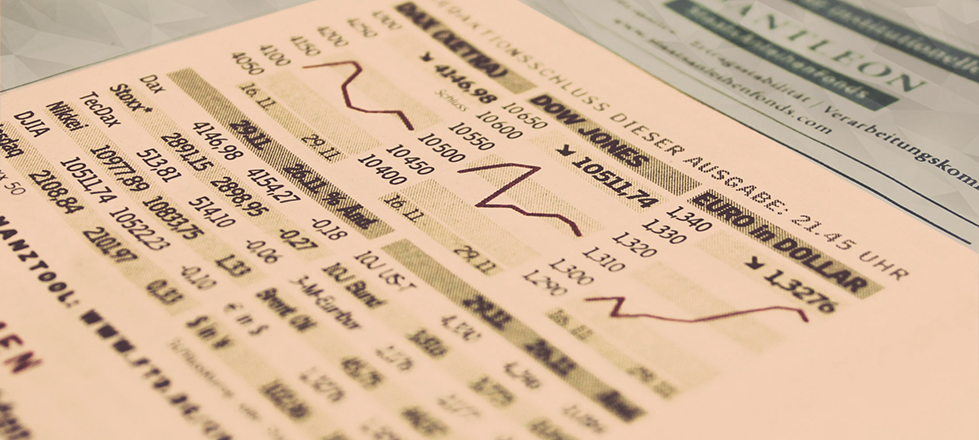

Most people are broadly familiar with the term ‘fund’ when it comes to investing but, in reality, there are a number of different fund types. One version that’s often overlooked is the ‘Investment Trust’ – also known as an investment company or closed-ended fund – despite the fact that they have existed for over 150 years. Whilst they are similar in nature to open-ended vehicles, such as unit trusts and OEICs, they exhibit a number of attractive characteristics which make them genuinely worthy of consideration, and are therefore attracting wider attention and at an ever-increasing rate.
Having established that investment trusts might prove to be a valuable addition to one’s portfolio, the next challenge facing the investor is to select one or more specific trusts. With over 400 investment trusts currently trading on the UK stock market, investors are spoiled for choice. The purpose of this article is to explain how best to go about distilling that universe to a more manageable number, prior to undertaking in-depth research to arrive at a final selection, and so we’ve set out the various steps below.
Step 1: Use the right data source
When looking to choose an investment trust, the immediate good news is that much of the ‘heavy lifting’ has already been done for you by The Association of Investment Companies (AIC), the trade body founded in 1932 to further the interests of the investment trust industry. Detailed information regarding all the investment trusts listed on the UK stock market is helpfully provided by the AIC.
The section headed ‘Find and compare investment companies’ allows you to filter your selection by a range of criteria, such as geographic region, investment need (growth, income etc) and specific sector (eg North American Smaller Companies).
Step 2: Establish your investment purpose
Investment returns are delivered in three fundamental forms: capital growth (an increase in the share price), income (the payment of dividends), or a combination of the two. The nature of the return you’re seeking is likely to be driven largely by your personal circumstances. For example, an individual in their 30s with a longer-term investment horizon may be in a position to accommodate higher risk share-based investments designed to generate capital growth, whereas someone on the cusp of retirement is likely to be contemplating lower risk investments with more of an income profile.
Roughly 85% of investment trusts pay a dividend, although most will try to grow the value of capital each year as well. The dividend yield – the annual dividend payments expressed as a percentage of the current share price – will vary substantially between trusts however (from under 1% pa in some cases to over 10% pa in others) and so, if income is a priority, you’ll need to do your research.
Step 3: Select your region and asset type
Do you want to invest in a specific country (eg North America), a region (eg Asia) or globally? What asset type do you want to invest in: shares or fixed income assets, like government and corporate bonds? Do you want to invest across a broad range of industries or retain a focus on a particular sector, like technology?
The AIC has made life considerably easier by helpfully categorising the 400 or so investment trusts into roughly 50 sectors, allowing you to filter your selection in a highly tailored way – examples of these sectors would include Asia Pacific Income, European Emerging Markets, Global Equity Income and Japan. Needless to say, there’s a sector for almost every conceivable investment need.
It’s worth bearing in mind, however, that the AIC’s categorisations are quite broad and that certain investment trusts choose to define themselves in a more focused way. For example, a trust might fall within the ‘Global’ sector but, on studying the trust’s investment objective, you could discover that its investment scope is restricted to, say, larger companies. An investment trust will typically display this information very clearly on its website.
Step 4: Look at past performance
Past performance, as we all know, is not necessarily a guide to the future. Nevertheless, it’s generally prudent to look at an investment trust’s track record versus its peer group – particularly over the long term – in that it may provide a degree of reassurance as to the manager’s abilities. If nothing else, it’s probably unwise to invest in a trust that has a prolonged tendency to underperform!
Again, the AIC database is instructive. The website allows you to rank the entire universe of investment trusts by their total shareholder return (ie the increase in the share price plus reinvested dividends) over three discrete periods: one year, five years and 10 years. For additional analysis, you may want to consult the manager’s own website which will contain a wealth of past performance data, as well as related information such as a breakdown of current holdings.Typically, assessing past performance over a more protracted period is a more accurate indicator in that it focuses on consistency, thereby eliminating short-term periods when a manager may simply have been lucky or when a trust’s investment strategy may have been out of favour: a value-led strategy may, for a certain period, lag behind one that pursues growth stocks, for example.
Step 5: Buy cheap or buy expensive?
It’s important to establish whether you’re buying the underlying assets in an investment trust for more or less than they’re worth. Since an investment trust has a fixed number of shares in issue, the price of those shares is affected both by the performance of the underlying investments and by investor demand: inevitably, the law of supply and demand dictate that, the more popular the trust is, the more expensive its shares will be … and, needless to say, vice versa.
When in demand, a trust’s share price may rise to a premium over its net asset value (NAV) – ie the shares are worth more than the value of the underlying assets. Equally, there may be times when a trust falls out of favour and its share price is trading at a discount to the NAV. Buying investment trust shares at a discount may well constitute a ‘bargain’, however it’s always wise to consider why that discount exists: is it, say, a function merely of short-term negativity, or is there a fundamental flaw in the investment strategy? Further research may well provide the answer.
To establish whether a trust’s shares are trading at a premium or discount, consult the AIC database which will state both the NAV and the most recent closing price for the trust’s shares – the percentage premium or discount is then a simple calculation.
Step 6: The final selection
From a starting point of over 400 investment trusts, you should now be at a stage where you’ve narrowed your choices down to a much smaller shortlist containing those which have performed consistently well and which meet your investment needs. The final stage is then to visit the websites of those trusts and to do as much research as you can: be sure to study the factsheet, listen to any investment commentaries from the fund manager, analyse the trust’s major holdings and download the latest annual and half-year reports.
You’ll then be well-placed to take the plunge … but if you’re still uncertain, consult a professional financial adviser.
Bond: A debt security issued by a company or a government, used as a way of raising money. The investor buying the bond is effectively lending money to the issuer of the bond. Bonds offer a return to investors in the form of fixed periodic payments, and the eventual return at maturity of the original money invested – the par value. Because of their fixed periodic interest payments, they are also often called fixed income instruments.
Underlying Asset: Underlying assets are the financial assets upon which a derivative’s price is based. Options are an example of a derivative. A derivative is a financial instrument with a price that is based on a different asset.
[1] Source: The Association of Investment Companies, 16/03/2020